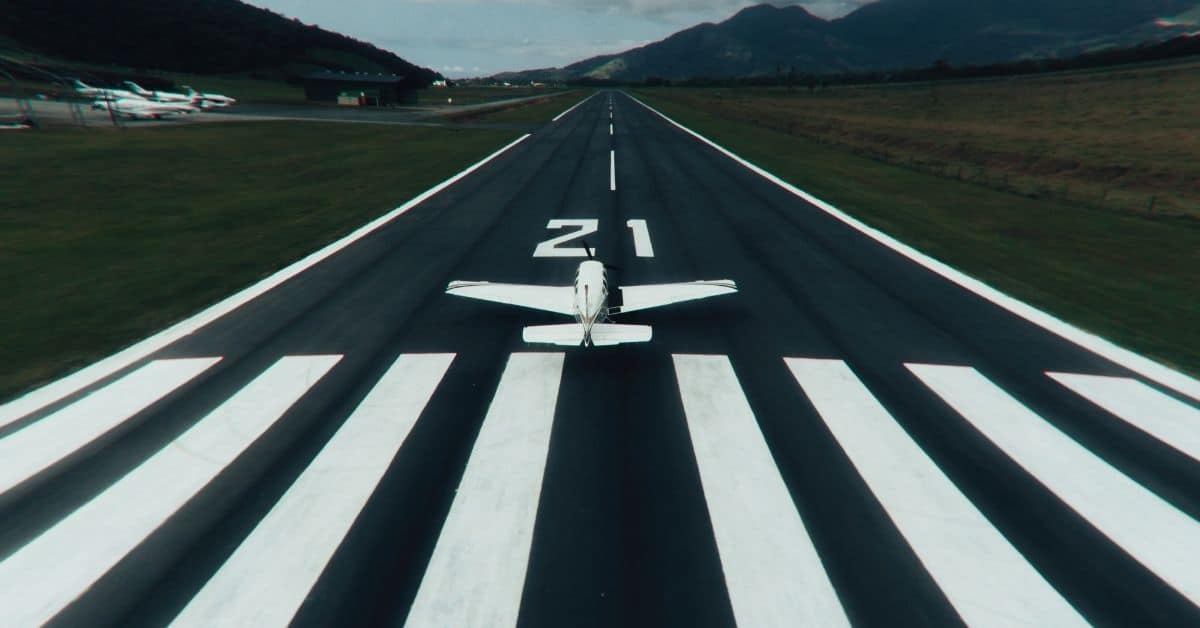For most aircraft owners, building and operating your own airstrip is typically not possible. However, you can build your own airstrip on the basis that you have sufficient land, finances, and that you comply with aviation authorities in your jurisdiction. In the United States, there are estimated to be 14,500 active private airstrips. These airstrips are generally constructed of gravel, grass or in some instances even concrete or asphalt.
Can I Have My Own Airstrip?
The ability to have a private airstrip is dependent on numerous factors. However, if all factors can be satisfied, it is entirely possible. Generally, a few key factors determine the ability to construct a private airstrip. Such factors include:
- Land Available
To construct an airstrip of sufficient length for small general aviation aircraft, the number of acres available must be taken into consideration. Primary requirements in terms of land would be a long, even, and unobstructed section of land which would allow for sufficient runway length. There would also have to be land available at the end of the runway for the purpose of having a runway safety margin.
- Finance Required
Aside from the cost of land required to facilitate a private airstrip, a significant level of investment will be required to fund the materials and labour required to construct the airstrip. Relevant legislative documents required by the aviation and local authorities may also amount to fees being incurred.
- Compliance
To legally own and operate a private airstrip, compliance with the relevant authorities in your jurisdiction will be required. The exact requirements will vary from country to country based on the National Aviation Authority’s (NAA) regulations surrounding privately owned airstrips. Local planning laws and councils may also have requirements to be met in terms of planning permission and permits required.
How to Register a Private Airstrip
Registering a private airstrip in the United States is done so under the Federal Aviation Administration (FAA), the national governing body for aviation. To officially register the airstrip and have it acknowledged by the FAA, the operator must submit FAA Form 7480-1. This form should be submitted to the operator’s relative regional office.
By doing this, the operator is eligible to receive an official FAA Location Identifier (LID) for the airstrip. The FAA LID is a 3 to 5 letter/number designation assigned to an aviation facility such as an airport, weather station or navigational aid. Each facility has a unique code assigned, generally comprised of a combination of numbers and/or letters.
Upon being assigned an FAA LID, the airstrip can then be added to relevant aeronautical and navigational charts.
How Much Does It Cost to Build a Private Airstrip?
The costs associated with constructing a private airstrip vary, with the key factors mentioned above generally determining the final construction cost. Materials used, length of the runway and legislative requirements will also be key financial components.
The value of land and local requirements will also be contributory factors. You would expect to pay more for land in some states compared to others.
As an across-the-board average, you can expect to pay 400-700 dollars per square foot of land. However, this could fall outside of this estimate due to the wide range of land values throughout the United States.
How Long Does a Landing Strip Need to be For a Small Plane?
The length and width of a private airstrip will depend on numerous factors. Such factors are elevation, temperature, winds, and obstacles (if any) near the airstrip. Aside from these factors, aircraft runway requirements and wingspan as specified by the manufacturer will determine the length needed.
To give some context to the general runway length required, a single-engine aircraft such as the Cessna 172 typically requires 800-1000 feet to get airborne. This figure is based on International Standard Atmosphere (ISA) conditions.
As this number is simply a benchmark, more runway length may be required to safely facilitate an aircraft.
How Wide Should a Private Runway Be?
While light, general aviation aircraft have a much smaller wingspan than that of large commercial aircraft, sufficient width should be allocated to allow for potential deviations from the centre of the runway.
For a single-engine light aircraft, a minimum width of 30-40 feet is required to comfortably facilitate any directional deviations from the centre of the runway.
How Thick/Deep Should the Runway Be?
When constructing a runway, the weight of the aircraft which will be landing and taking off from the strip should be taken into consideration. Typically, the heavier the aircraft the more structural reinforcement the runway will require.
For smaller light general aviation aircraft such as the Cessna 172, a dry grass strip is usually sufficient. However, for larger aircraft, a grass strip may not be structurally sufficient. In this instance, the runway may be constructed of gravel or concrete.
Runway Gradient/Slope
In some circumstances, it may be impossible to completely even out a surface for a 0-degree slope or gradient. As a result, many runways will have an incline. This gradient or incline should typically never exceed +/- 2%. Runways are perfectly appropriate for use once they fall within this margin.

After visiting more than 60 countries, I have probably been on every type of plane there is and visited countless airports. I did my very first international solo trip to South Africa at the age of only 16 and haven’t really stopped traveling since.
Despite the adventurous travel itch, I do have a nerdy side as well – which is satisfied by writing about all things aviation “too boring” for my regular travel blog.
